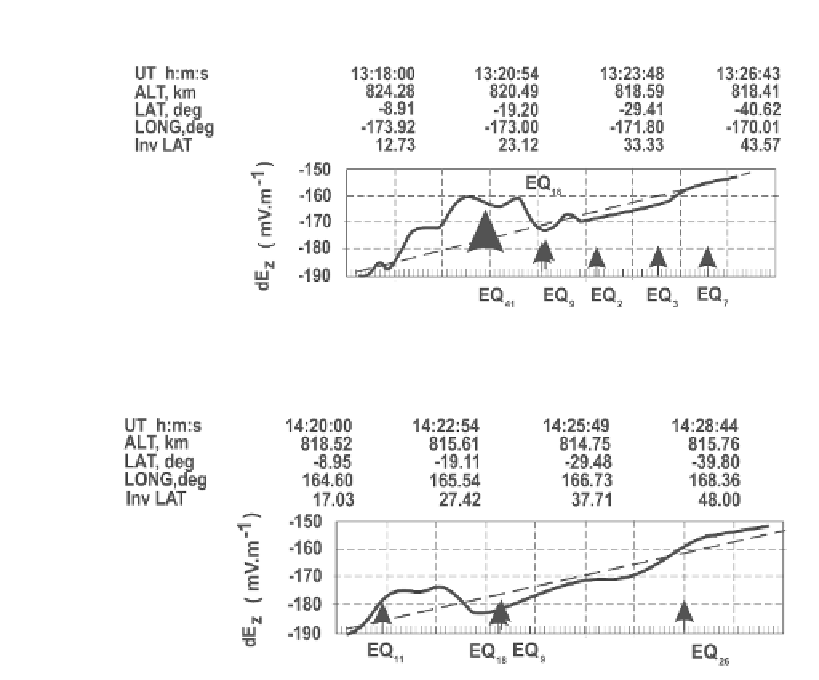Geoscience Reference
In-Depth Information
Figure 2b.
Disturbances in
E
z
component of the quasi-static field, orbit 170.
Figure 2c.
Disturbances in
E
z
component of the quasi-static field, orbit 213.
Data from orbit 213 and respectively the monitoring of seismic situation in the
area of New Hebrides Trench, is used as well (Figure 2c). The New Hebrides Trench
extends from New Guinea to the east-southeast. In this case the zone of the shallow
seismic manifestations coincides with the zone of convergence between the Australian
plate and the New Hebrides microplate (a segment of the much larger Pacifi c plate).
The occurred intermediate-deep earthquakes defi ne the extent of the downgoing slab
from the Australian Plate (Goff et al., 2006; Kolobov et al, 2006). It is of great in-
terest, that the disturbances observed on Figure 2c propose some information about
earthquakes in the region, but 3 days later (orbit 213 on August 22, 1981). Figure
2c shows new form of the anomalous disturbance zone in a wide latitudinal interval.
Any disturbances related to the major earthquake EQ
41
and its foreshock EQ
40
are not
observed (∆λ > 20°). We consider that the width of disturbance zone is probably de-
termined by time-shift post effects from EQ
11
and pre-effect (59 hr) of EQ
26
. We can
also observe increases in
E
z
component of about 4 mV/m, 5 mV/m, and 9-10 mV/m
from EQ
26
, EQ
9
, and EQ
18
, respectively. These increases are shifted to the north from
the earthquake epicenter. Any disturbances from EQ
8,13,15,20,25
are not observed because
these earthquakes are at a relatively low energetic level. There are diffi culties in the
















